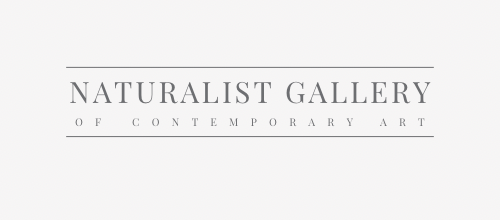Featured image: Baby Baby, Jack Farkas, 2004, oil pastel on paper, 36 x 42 in. / 91.44 x 106.68 cm.
Jack Farkas’s art breaks past the literal, diving into the psychological and spiritual terrain beneath form.
Jack Farkas uses symbolic abstraction and vivid color to explore identity, spirituality, and emotion through the male form and sacred imagery.
Drawing on religious iconography, symbolic geometry, and the human body, particularly the male chest, Farkas simplifies and abstracts his subjects to access inner truth. His use of vibrant color, repeated forms, and modular composition create a rhythmic, almost ritualistic experience for the viewer. Through In This Sign, Clowns II, and Is That You?, Farkas maps emotion, identity, and sacred presence with fearless clarity.
Explore our curated selection of contemporary artists from around the globe.
Naturalist Gallery offers artist representation internationally. Apply your art.
In This Sign, Jack Farkas, 2007, acrylic on board, 40 x 30 in. / 101.6 x 76.2 cm.
In This Sign merges religious symbology with a Pop sensibility. Four panels, each showing a stylized crown and cross in bold colors, repeat across a bright green ground. Reminiscent of Andy Warhol’s repetition but imbued with spiritual gravitas, the work references the ancient Christian phrase “In this sign, you will conquer.” The symbols float in saturated blocks of color, their alignment slightly shifted to generate motion and contrast. Farkas treats the icon not with irony, but with reverence, positioning it as a timeless emblem of sacrifice, power, and divine authority.
In Clowns II, Farkas moves toward playful yet unsettling abstraction. Four clown-like figures, formed from curvilinear shapes and punchy neon tones, grin or grimace from the page. While seemingly humorous, the flattened forms and exaggerated features hint at deeper psychological unease. These are not entertainers, but masks: archetypes of vulnerability, absurdity, and emotional performance. The oil pastels glow with immediacy, their bright surfaces belying the layered discomfort underneath. Farkas invites us to consider the roles we wear, and the truths we conceal beneath them.
Is that You?, Jack Farkas, 2005, oil pastel on paper, 55 x 45 in. / 139.7 x 114.3 cm.
Is That You? pushes Farkas’s abstraction to its most distilled emotional core. Twelve square panels form a grid of ambiguous, chest-like faces, each subtly different, yet linked by symmetry and shape. Their expressions range from placid to pained, their contours like maps of internal energy. Farkas’s exploration of the male chest as a vessel for spiritual and emotional communication becomes fully realized here. These are portraits of presence, each line and color variation a reflection of the soul’s shifting state. The repetition, rather than dulling meaning, amplifies it, making the grid a meditative surface of shared humanity.
Across these works, Jack Farkas transforms bodies and symbols into visual mantras. His practice strips away surface identity to reveal emotion, belief, and metaphysical resonance. Whether evoking the sacred with crowns and crosses, the performative self through clown masks, or the soul through geometric torsos, Farkas composes with intention, where color becomes language and form becomes feeling. In repetition, he finds revelation.
Learn more About Naturalist Gallery of Contemporary Art.
Simper Fidelis, Jack Farkas, 2024, oil on board mounted masonite, 40 x 30 in. / 101.6 x 76.2 cm.
You may also find the following articles helpful:
The 14 Essential Artists of Impressionism
Expressionism: 20 Iconic Paintings & Their Artists
Renaissance Art: Origins, Influences, and Key Figures
Classical Art Movement: Exploring the History, Artists, and Artworks
Figurative Art: Understanding, Collecting, and Appreciating the Style
Daily Routines of Famous Artists: Learn from the Masters
Top 12 Controversial Artworks That Changed Art History





